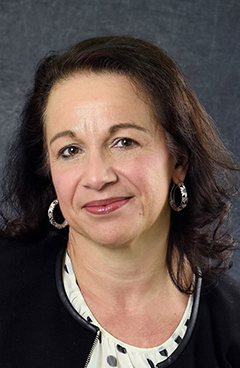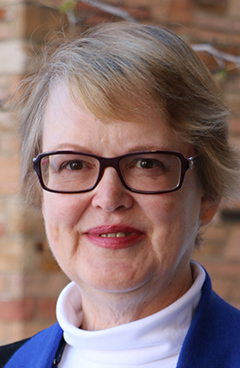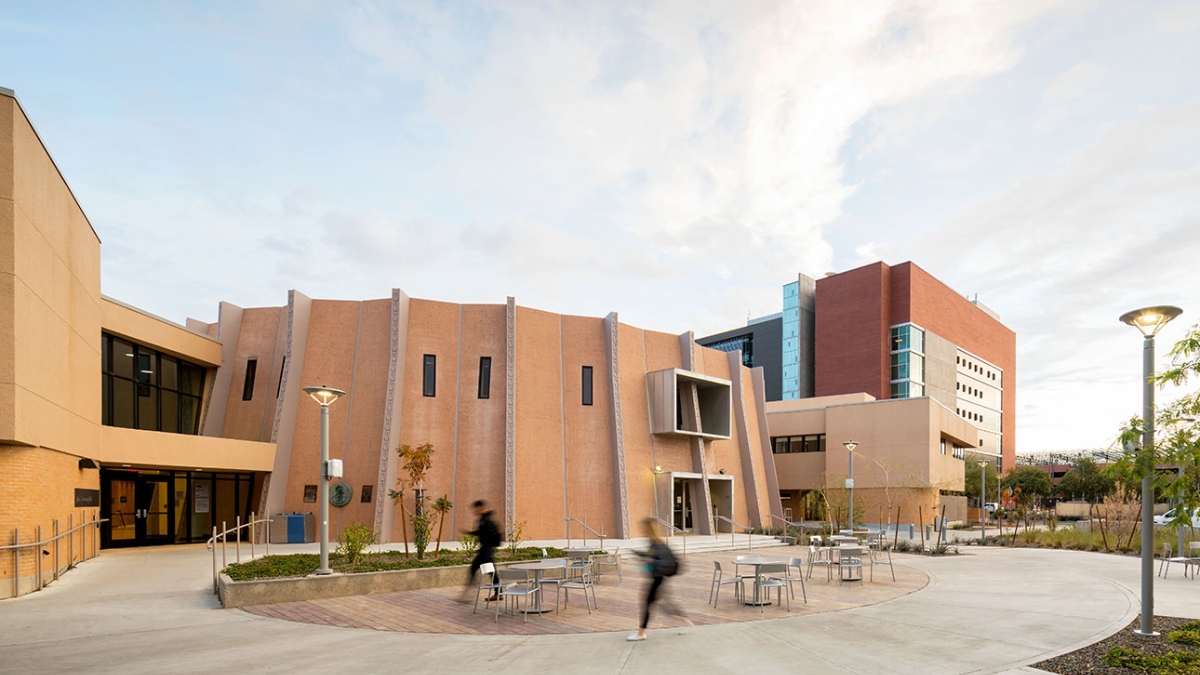In the natural sciences division of The College of Liberal Arts and Sciences at Arizona State University, students and faculty explore the great unknowns of the Earth, our solar system and the universe beyond through groundbreaking research.
Two new directors and one new chair will soon join the natural sciences division to lead the research being done within ASU’s School of Mathematical and Statistical Sciences, the School of Molecular Sciences and the Department of Physics.
“We are eager to welcome these incredibly talented women to The College community,” said Nancy Gonzales, provost pro tempore and outgoing dean of natural sciences.
“They are each highly accomplished scholars with strong track records as leaders in their respective disciplines. They will help us advance our mission of inclusive excellence in research while leading innovative approaches to educate the next generation of leaders in science and math.”

Donatella Danielli, director of the School of Mathematical and Statistical Sciences
Danielli joins The College after working as a professor of mathematics at Purdue University for nearly 20 years. Her research is in the areas of partial differential equations, calculus of variations and geometric measure theory, with specific emphasis on free boundary problems arising from physics and engineering.
Prior to joining the Purdue faculty in 2001, she held visiting positions at The Johns Hopkins University and at the Institut Mittag-Leffler in Sweden. She was also a visiting fellow at the Isaac Newton Institute for Mathematical Sciences in Cambridge, United Kingdom, in 2014.
She is a fellow of the American Mathematical Society and has received several awards and distinctions for her teaching, research and leadership including the 2020 Class of Fellows of the Association for Women in Mathematics.
Danielli received a laurea cum laude in mathematics from the University of Bologna, Italy in 1989 and a PhD in mathematics from Purdue University in 1999. Her appointment as director of the School of Mathematical and Statistical Sciences will begin on Jan. 1, 2021.

Tijana Rajh, director of the School of Molecular Sciences
Rajh joins ASU from the Center for Nanoscale Materials at Argonne National Laboratory. Her research examines colloidal semiconductor nanocrystals and their integration with biomolecules.
In her roles as a senior scientist and an Argonne Distinguished Fellow, she conceived, planned and managed the interdisciplinary research that resulted in several successful programs supported by the U.S. Department of Energy Office of Science and Basic Energy Sciences.
In addition, she served as deputy division director for the Center for Nanoscale Materials and the Nanoscience and Technology Division, where she worked on the vision for scientific growth.
Throughout her career, Rajh has been passionate about leading change in diversity and inclusion in scientific institutions. She has held roles with the Women in Science and Technology steering committee and the Diversity and Inclusion Council of Argonne National Laboratory.
Rajh received a PhD in physical chemistry from the University of Belgrade in Serbia. Her appointment as director of the School of Molecular Sciences begins July 1, 2021.

Patricia Rankin, chair of the Department of Physics
Rankin comes to ASU after working as a professor of physics at the University of Colorado Boulder. Through her work, she strives to find ways to encourage broader participation in the sciences while enabling multidisciplinary teams to address complex problems like climate change.
She was the principal investigator for the National Science Foundation’s ADVANCE Institutional Transformation grant, a program with the goal to promote equity in science, technology, engineering and mathematics (STEM).
Rankin has held a variety of administrative roles throughout her career including as program officer at the NSF and as the associate dean for the natural sciences and associate vice chancellor for research positions at the University of Colorado Boulder.
She recently chaired the American Physical Societies (APS) Committee on the Status of Women in Physics and is currently an at-large member of the executive committee of the four corners section of the APS.
She received a bachelor’s degree and a PhD in physics from Imperial College London. Her appointment as chair of the Department of Physics will begin on Jan. 1, 2021.
More Science and technology

ASU-led space telescope is ready to fly
The Star Planet Activity Research CubeSat, or SPARCS, a small space telescope that will monitor the flares and sunspot activity…

ASU at the heart of the state's revitalized microelectronics industry
A stronger local economy, more reliable technology, and a future where our computers and devices do the impossible: that’s the…

Breakthrough copper alloy achieves unprecedented high-temperature performance
A team of researchers from Arizona State University, the U.S. Army Research Laboratory, Lehigh University and Louisiana State…


